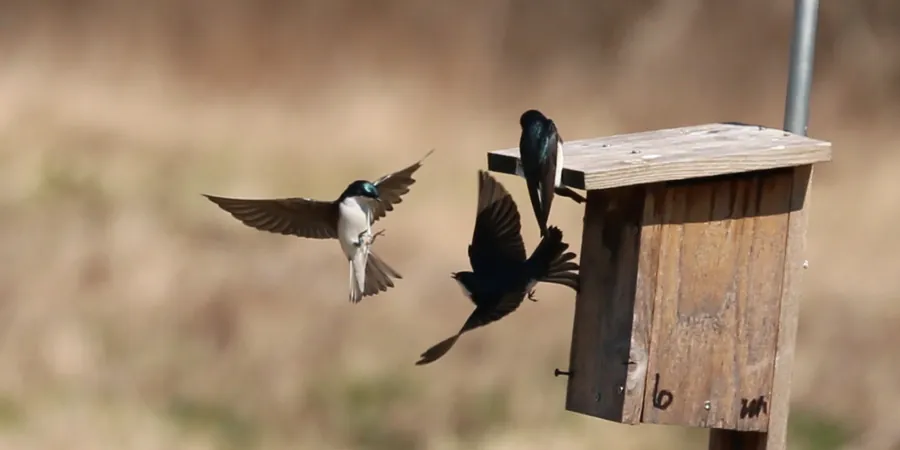
Unraveling Evolution: Do Birds Repeat Their Aggressive Behavior?
2025-04-28
Author: Sophie
The Fascinating New Study on Bird Evolution
For ages, scientists have pondered a tantalizing question: if given a second chance, would evolution chart the same course? New research suggests it might, particularly in terms of how avian brains govern behavior, a complex trait of nature.
Published in *Nature Ecology & Evolution*, this groundbreaking study is spearheaded by Kimberly Rosvall, an associate professor at Indiana University, alongside Sara Lipshutz, a former postdoc at IU now teaching at Duke University.
Aggression: A Survival Trait in Cavern-Nesting Birds
The team’s striking findings reveal that bird species that nest in hard-to-reach tree cavities have independently developed increased aggression, especially among females. Remarkably, this aggression is mirrored by molecular similarities in the brain structure of these species.
Researchers observed wild birds, measuring their aggressive reactions to a stuffed decoy paired with aggressive calls. This territorial challenge was replicated for hundreds of birds across five bird family branches, including swallows, wood warblers, sparrows, thrushes, and wrens.
Nest-Guarding Aggression Explained
Focusing on closely related species—one that strictly nests in cavities and another with a more flexible nesting approach—the team discovered a pressing instinct to defend their territories among cavity-nesters. Rosvall explained, "I’ve been studying cavity-nesters, like tree swallows and bluebirds, for over two decades. Their fierce defense of nesting areas sheds light on the evolutionary pressures shaping their brains.”
The Genetic Blueprint for Aggression
Out of more than 10,000 genes analyzed in the brains of ten bird species, researchers pinpointed a consistent set of genes that exhibited altered expression in cavity-nesting species. This genetic adaptation was uniquely observed across several lineages that evolved heightened aggression.
Rosvall remarked, "It's a small number of genes, but what’s exhilarating is that evolution has indeed repeated itself. While we knew this could occur for physical traits, witnessing it for complex behaviors like aggression is groundbreaking.”
A Complex, Yet Predictable Evolutionary Path
Moreover, the team identified a broader gene set linked to increased aggression across multiple branches of the bird family tree, indicating that, as Rosvall and Lipshutz claim, "There may be many ways to create an aggressive bird." This study illustrates that behavioral evolution can stem from independent brain changes while utilizing the same genetic toolkit.
Rosvall likened the findings to a group of artists painting the same landscape; while their canvases may vary, the core scene remains consistent. In this case, natural selection has repeatedly emphasized aggression over the past 25 million years.
Implications Beyond the Bird Kingdom
These findings not only reveal the creativity and predictability of evolution but may also impact human health. Rosvall noted, "Our study did not highlight the typical ‘aggression’ genes associated with testosterone. Instead, we found convergent aggression increases tied to genes linked to neurodegenerative diseases."
However, she clarified, "This doesn’t imply that aggressive birds will develop Alzheimer's. It indicates that evolution has finely tuned these genes to alter brain function and behavior. Understanding these mechanisms may ultimately inspire support strategies for human health."









 Brasil (PT)
Brasil (PT)
 Canada (EN)
Canada (EN)
 Chile (ES)
Chile (ES)
 Česko (CS)
Česko (CS)
 대한민국 (KO)
대한민국 (KO)
 España (ES)
España (ES)
 France (FR)
France (FR)
 Hong Kong (EN)
Hong Kong (EN)
 Italia (IT)
Italia (IT)
 日本 (JA)
日本 (JA)
 Magyarország (HU)
Magyarország (HU)
 Norge (NO)
Norge (NO)
 Polska (PL)
Polska (PL)
 Schweiz (DE)
Schweiz (DE)
 Singapore (EN)
Singapore (EN)
 Sverige (SV)
Sverige (SV)
 Suomi (FI)
Suomi (FI)
 Türkiye (TR)
Türkiye (TR)
 الإمارات العربية المتحدة (AR)
الإمارات العربية المتحدة (AR)